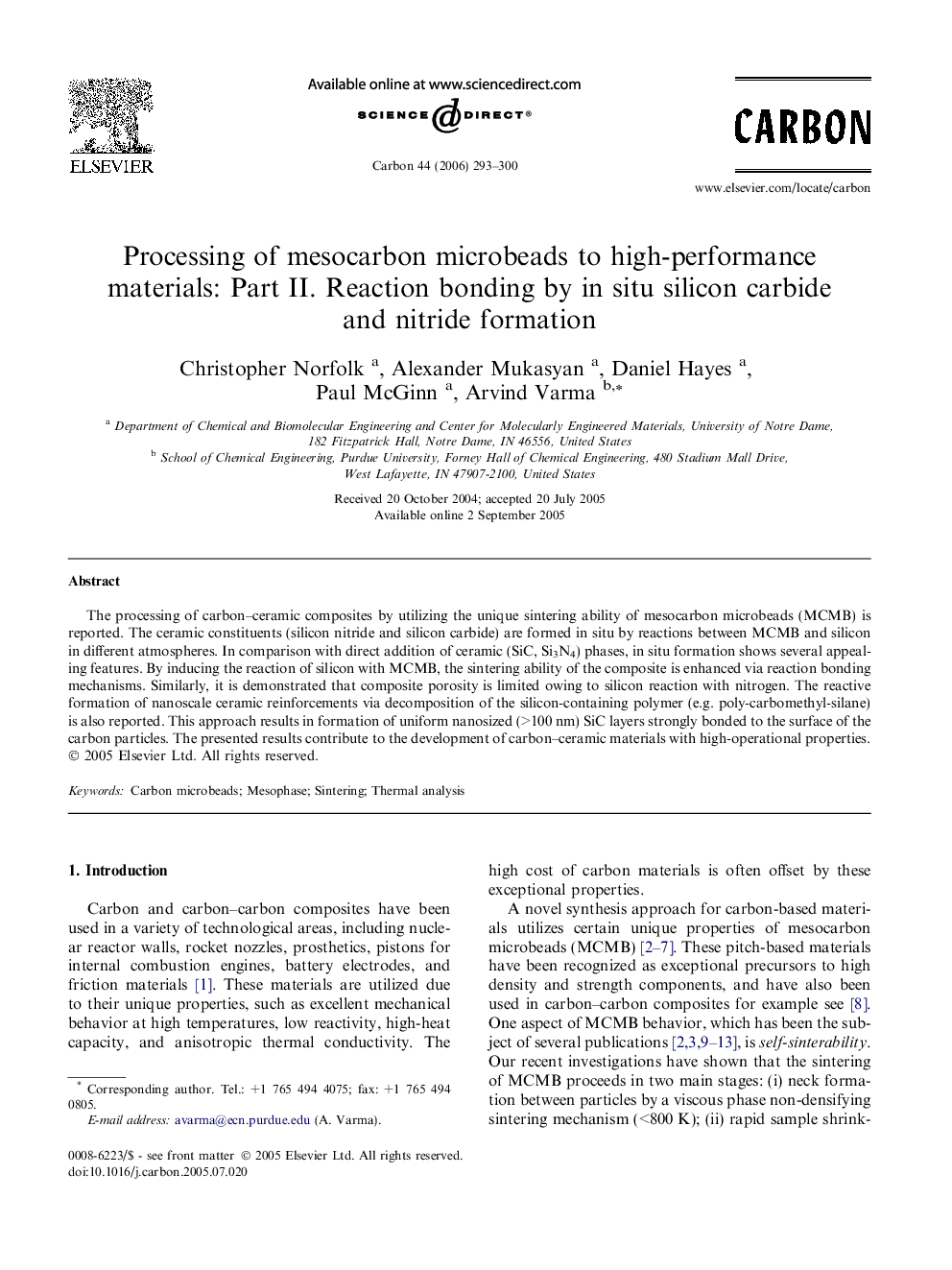| Article ID | Journal | Published Year | Pages | File Type |
|---|---|---|---|---|
| 1420028 | Carbon | 2006 | 8 Pages |
The processing of carbon–ceramic composites by utilizing the unique sintering ability of mesocarbon microbeads (MCMB) is reported. The ceramic constituents (silicon nitride and silicon carbide) are formed in situ by reactions between MCMB and silicon in different atmospheres. In comparison with direct addition of ceramic (SiC, Si3N4) phases, in situ formation shows several appealing features. By inducing the reaction of silicon with MCMB, the sintering ability of the composite is enhanced via reaction bonding mechanisms. Similarly, it is demonstrated that composite porosity is limited owing to silicon reaction with nitrogen. The reactive formation of nanoscale ceramic reinforcements via decomposition of the silicon-containing polymer (e.g. poly-carbomethyl-silane) is also reported. This approach results in formation of uniform nanosized (>100 nm) SiC layers strongly bonded to the surface of the carbon particles. The presented results contribute to the development of carbon–ceramic materials with high-operational properties.
